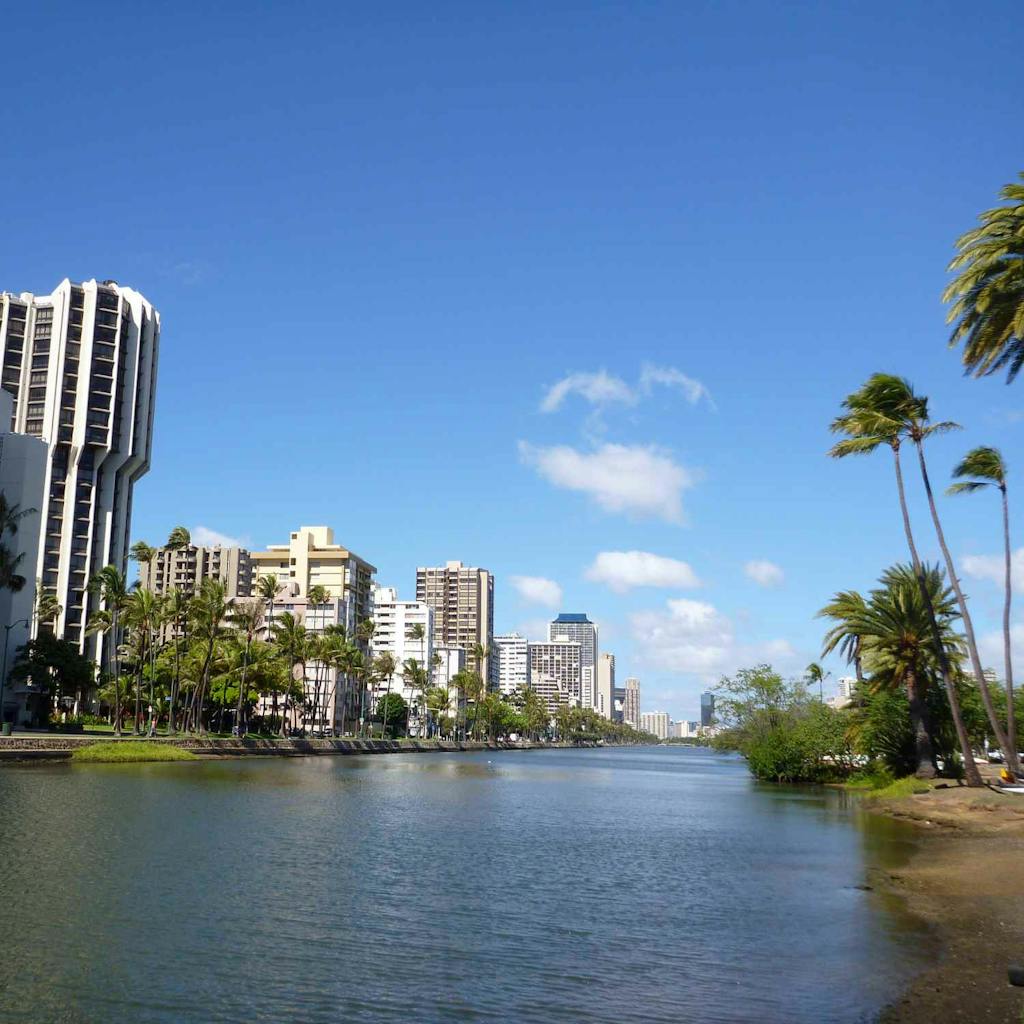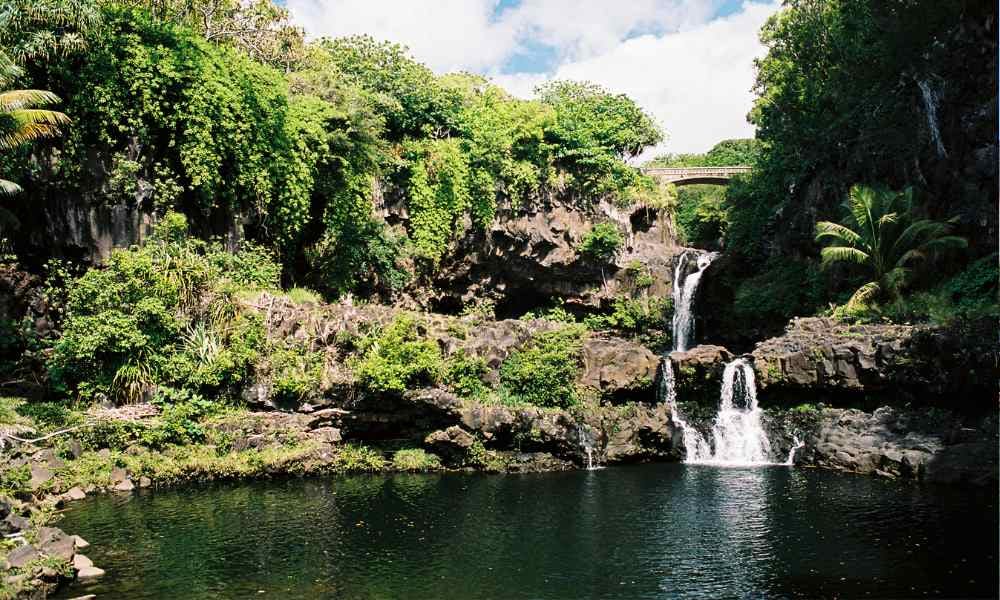Should you be concerned about flesh eating bacteria in Hawaii? Vibrio vulnificus is a rare bacteria found in Ala Wai Canal, a Honolulu waterway you don’t want to swim in. But there are other forms of bacteria lurking in Hawaii’s water. Here’s where you don’t want to swim, and how to protect yourself from illness.
Heeding Warnings
When I was a visitor to Hawaii, I used to wonder what all those signs were about — the ones at the foot of waterfalls, ponds, and inlets that warn of Leptospirosis and other bacteria in the water. Typically, I ignored them.
But, as a local, I’m much more aware of my surroundings and the posted warnings in place to keep me safe (or maybe I’ve just aged — who knows?!).
Either way, it’s important YOU pay attention to the posted warning signs, too. They’re there to keep you safe and away from harmful bacteria that could lurk in the water in Hawaii.
Hawaii Flesh Eating Bacteria in Ala Wai Canal

Any Honolulu visitor will see the Ala Wai Canal, the waterway that extends across Waikiki’s northern border. Also, any Honolulu visitor (or resident) will have no problem staying out of the water. It’s considered one of Hawaii’s most polluted waterways, and its murky appearance is a stark contrast to Waikiki’s glistening shoreline.
It’s a good thing nobody wants to swim in Ala Wai Canal in Hawaii – it’s home to a flesh eating bacteria called Vibrio vulnificus. This bacteria can enter the body through wounds, or if you eat contaminated seafood.
Don’t worry – you won’t want to do any fishing in Ala Wai Canal, either. So, this is one Hawaii bacteria that should be easy to avoid.
However, Vibriosis caused by other Vibrio bacteria is somewhat common in Hawaii, with 20-40 cases reported each year. These infections primarily cause gastrointestinal issues and typically occur from swimming in brackish water.
Leptospirosis in Waterfalls & Ponds
The most common bacteria in the water in Hawaii is called leptospirosis. Leptospirosis is a bacterial disease that affects humans and animals. The disease occurs all over the world, but is most common in warm climates. Leptospirosis can infect cattle, pigs, horses, dogs, and wild animals such as rodents (rats, mice), mongoose, and sea mammals.
This isn’t a flesh-eating bacteria, but it can cause severe illness that can quickly ruin your Hawaii vacation (and can become life-threatening for a small number of people). Here are some things to know about Leptospirosis:
- You can get leptospirosis by swimming or wading in freshwater puddles, ponds, or streams contaminated with animal urine, or by coming into contact with wet soil or plants contaminated with animal urine. The bacterium enters the body through broken skin or through the soft tissues on the insides of the mouth, nose, or eyes. You can also get it by direct contact with urine, blood, or tissues from an infected animal. Leptospirosis is not spread from person to person.
- The symptoms include fever, headache, chills, sweating, muscle pain, painful eyes, and vomiting. Occasionally, yellowing (jaundice) of the skin and the whites of the eyes and a rash may also occur. The symptoms may last from a few days to several weeks. In some persons, the infection can be mild and without obvious symptoms. On the other hand, as recently as 2010, liver and kidney failure have been observed in a few patients.
- The symptoms usually start 7 to 14 days after being infected, but the onset can range from 2 to 30 days.
- A doctor can prescribe medicines to treat leptospirosis. If not treated, the patient can develop meningitis, kidney damage, or liver damage. In rare cases, even death may occur.
That definitely sounds like something you want to avoid! Ahead are ways to protect yourself from this bacteria in Hawaii:
Avoid Freshwater Swims
Do not swim or wade in any freshwater streams or ponds in Hawaii, especially when you have open cuts or sores. Swimming with your head underwater also increases your risk of infection through the eyes, nose, and mouth.
Keep Your Hands Clean
Wash your hands thoroughly with soap after using the bathroom, after changing diapers, and before preparing food.
Don’t Drink the Water
Do not drink pond or stream water without boiling or chemically treating it.
Stay Protected
Wear protective clothing, including gloves, boots, long-sleeved shirts, and pants, when clearing shrubs or grass, or working in wet soil where leptospirosis is a problem.
Avoiding Flesh Eating Bacteria and Other Infections in Hawaii
If you want to ensure your safety, make sure you visit waterfalls under the care of a knowledgeable guide who knows which ponds and waterfalls are most likely to carry the bacteria.
Hawaii Aloha Travel can help book guided hikes with experts who can help keep you safe when visiting places that could have high bacteria levels.
We all see folks splashing around and playing in waterfalls — few, if any, will become ill with a bacterial infection. But it’s important to stay safe and make sure you pay attention to any posted signs!




